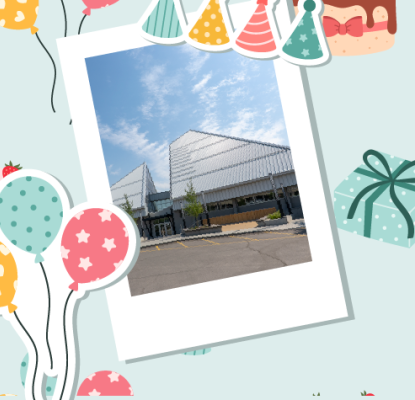Wednesday, October 22, 2025
16 Ideas to Help Your Child Learn to Read
Learning to read is different for everyone. Use these fun and easy tips to help support your emerging reader.
1. Let your child see you reading
Your reading habits play a large role in determining how often your children read: 57% of children who are frequent readers have parents who read books five to seven times a week. If you typically read on a screen or listen to audiobooks, invite your children to look or listen so they understand you’re reading and not playing Candy Crush!
2. Play with language
Sing songs that focus on rhymes, alliteration, and tongue-twisters. Children can fill in the rhymes in songs like "Down by the Bay," or "One, Two, Buckle My Shoe." Play phonetics games, such as listing as many animals as you can that start with a specific sound. Example: an /r/ sound (rabbit, rooster, rug), or words that have a /ch/ or sound blend in them (chat, chirp, match).
3. Reread familiar books
Rereading is critical for improving fluency. When children already know the story, they can focus more on understanding the meaning and words in the book. Seeing the same words over again helps children master new words and increases their confidence.
4. Track each word, and parts of words, with your finger as you read
Pointing out each word, and the sounds that make up a word, helps your child connect the sounds of words with the letters on the page. This makes sure they slow down and avoid guessing. Even if a child is repeating a memorized section of the book, when they point to sounds and words, they are associating the sound (phonetics) with the printed word and can make a visual connection. This helps some children retain information. Looking for a little extra motivation? Try using a special pointer, like an animal-shaped eraser on the end of a pencil instead of just a finger.
5. Become a word detective
If there’s a new word you come across with your child, talk about what it means. Consider other words that mean something similar and try to connect the word to something your child has already experienced or knows. Background knowledge and vocabulary are essential for skilled reading. Look at how the word is spelled or any interesting letter patterns in the word. Larger words may have familiar, shorter words within them, like “newspaper” and “daydream.” If you’re listening to an audiobook, the radio, or a song, talk about the sounds you hear.
6. Read to your child
Read in your home language. Parents can teach their child a love of books in any language, even if they don’t speak English.
7. Read with your child
Work together as a team when reading. You can support them by reminding them what sound the letters make and helping them blend letter sounds together to “sound out” or decode a word. Sharing the reading can make things more fun: you read one sentence, they read one sentence. There are lots of fun reading board games since as Zingo, Bananagrams, and Go Fish with Phonics.
8. Try dialogic reading
Dialogic reading helps young readers better follow the story. In dialogic reading, you start a discussion to help the child become the storyteller; you become the listener, the questioner, and the audience. Dialogic reading makes shared reading more engaging for the child and gives them ownership over their reading experience. Try the three R’s:
Relating: Ask how the story relates to something your child knows or has experienced.
“This reminds me of when... What do you think?”
Reflection: Ask why the characters are acting a certain way / doing certain things.
“I wonder why they...” or “Why do you think they...?”
Retelling: Have your child summarize parts of the story either at the end of an interesting part, at the end of a page, or at the end of the book.
“Whoa! What just happened there?... And then what happened?”
9. Connect print to sound in straightforward ways
Make letter-sound connections with the things you see in your everyday life. If you’re passing a McDonald’s you could say, "Look, it’s McDonald's. It starts with the /m/ sound." Or at home, ask your child, "In the spice drawer, can you find me the cumin? It starts with the /c/ sound, a letter C."
10. Use lots of praise
Even when mistakes are made, praise the skills your child used to get that answer. Offering gentle guidance helps keep them encouraged. If they read the word "horse" as "house," praise them for knowing the /h/ sound at the beginning and /s/ at the end. Ask them to count and say all the sounds in the word (three sounds: /h/ /or/ /s/. Point out the /r/ sound in the word and ask them if they hear that in the word "house." (They shouldn’t!) You can also encourage them to use context cues by asking them if the word “house” fits in the context of the sentence: “Do you think the knight rode a house to the castle?”
11. Skim and scan
Taking a quick look at the book with your child before reading it together lets you point out words that your child already knows. Every sentence will have words that your child can read easily or is close to recognizing automatically. Reinforce those words!
You can also point out words that might be challenging ahead of time. You can say, "Oh, this is a long word. Let’s break it into down. Do you see any parts of the word that you know?” Cover part of a word with your finger to help them see and read only one part at a time. Using the cover art and pictures in a book to determine what the story is about can help your child with context clues, too (like the knight and horse / house).
12. Tell stories and have your child tell stories
When children understand typical story structures, they can anticipate words. This builds early comprehension skills. Share a story from your family history or from when you were your child’s age. Invite them to share something from their life by asking, “What was the funniest thing that happened at school today?” You can even try inventing a shared story where you start and they build, taking turns to add details and plot twists: “Once upon a time, there was a very lonely robot … your turn!”
13. Have your child write
When beginning readers write words, they practice making letter-sound connections (phonetic spelling). Ask your child to send a text or email to a relative or write a letter to someone far away. Your child could help you make the grocery list. The words do not need to be spelled correctly but challenge them to see how much of the word they can spell, based on their understanding of the letter sounds.
14. Allow for invented spelling
Allow beginning readers to try to spell a new word, rather than spelling it out for them. Invented, or phonetic spelling, is an important developmental stage in early literacy. Research has shown it leads to stronger speaking, reading, and writing skills in later grades. For example, the word lion could be phonetically spelled L-Y-N and that demonstrates their understanding of the sounds. Spelling improves as children become more fluent readers.
Children can typically spell the first sound, and sometimes the end sounds, but the middle letters may be harder to isolate and hear, which makes middle sounds tricker to write. (i.e., for beans, they might write BS or BEN). After they try to spell a word, you can show your child the correct spelling and talk about how the spellings are different. While your child is writing, you can support them by emphasizing the sounds in the word: "Beans, let's listen, BBBB-EEEEE-NNNN, what is the first sound you hear? BBBBBBB, what letter makes the /b/ sound?”
15. Make reading an act of caring
Reading shouldn’t be a punishment, homework, or a chore. Make it enjoyable and an opportunity for a family connection. Choose a special reading spot. Have your child snuggle in or sit on your lap. Physical connection when reading associates positive emotions with books and stories. Read to pets or favourite stuffed animals. Make reading a ritual such as reading every night before bed or when you first get home after school. Show your own delight and enjoyment in reading. Make sure you smile, laugh, and express emotion in response to the text. Thank your child for reading with you.
16. Visit the Library
Let your child pick out the books you will read together based on their own interests. Look for the Learn to Read section at your local Library. Clearly marked with a star system, these books have simple words, repetition and different sentence length, depending on the level. You can also explore the Digital Library for new eBooks, including decodables, and audiobooks — some are even animated! All reading is good reading so take advantage of the fact that you can borrow up to 99 books at once. Try something new — cookbooks, non-fiction, comics, picture books, magazines and more.






